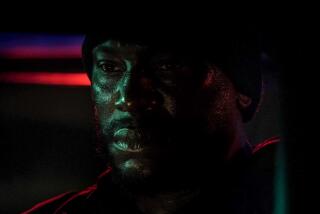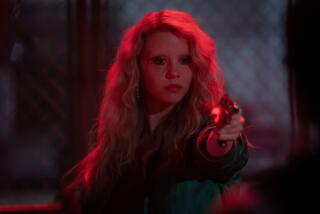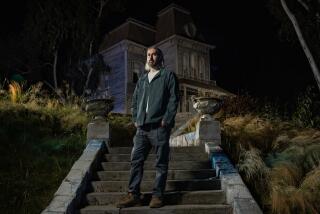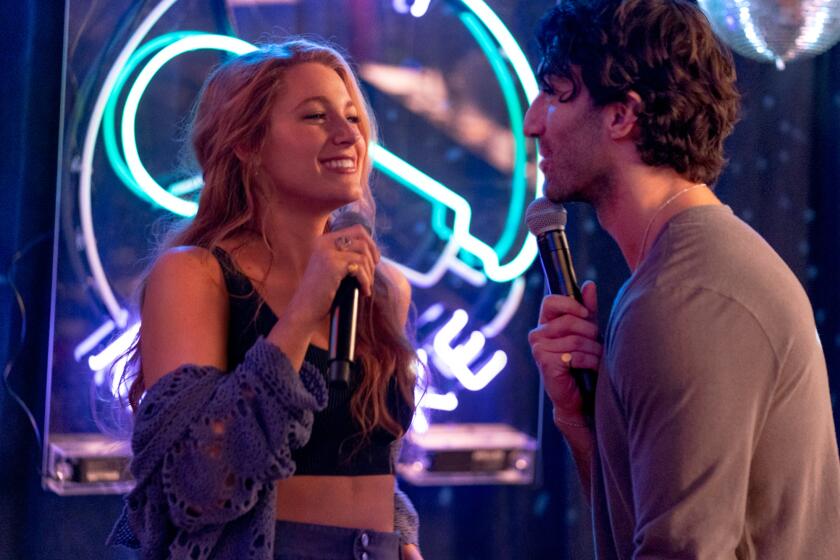Q&A: Whit Stillman revisits ‘The Last Days of Disco’ ahead of 20th anniversary event in L.A. area
In his first three films, “Metropolitan,” “Barcelona” and “The Last Days of Disco,” writer-director Whit Stillman established himself as the clear-eyed, sharp-witted chronicler of young people of a certain class.
His 1998 film, “The Last Days of Disco,” continued those explorations of varying degrees of ambition, aspiration and social mobility, this time in the early ’80s as the disco club craze was on the wane. A group of young people, including two women at the entry-level stage of the book-publishing industry played by Kate Beckinsale and Chloë Sevigny, navigate their way through a world of daytime drudgery and nighttime glamour.
Following the release of “Disco,” it would be more than a decade before Stillman made another movie, and the absence made him an intriguingly enigmatic figure. He eventually returned with 2011’s whimsically daffy “Damsels in Distress” starring Greta Gerwig and featuring supporting turns from Aubrey Plaza, Zach Woods and Alia Shawkat, which seemed to cement his influence among a new generation. He then reunited Beckinsale and Sevigny in another period film about class and social behaviors, 2016’s Jane Austen adaptation, “Love and Friendship.”
Now “The Last Days of Disco” is the subject of a special 20th anniversary screening (in 35mm) on Friday at the American Cinematheque’s Aero Theatre in Santa Monica. Stillman is scheduled to attend for a post-screening Q&A, along with Burr Steers and Tara Subkoff, who both appear in the film.
What has it been like for you recently revisiting the film? Is “The Last Days of Disco” the film of yours you get asked about most often?
No. That would be “Metropolitan.” It’s hard to live down your first film somehow. But I think it’s really cool the way “Disco” has improved over time a little bit. In the sense there was a lot of static about the movie when it came out, these journalistic worries that maybe people were bringing back disco or something. They felt that the two movies [“Disco” and “54”] and “Boogie Nights” earlier, “Oh, disco’s coming back, we can’t allow this to happen.” And so we got a few really great reviews, but a lot of the journalistic chatter back when the movie was coming out didn’t help.
I’ve discovered that the movie had been sort of rethought by the younger people I started working with on the “Damsels in Distress” shoot. For them it was a film they accepted and liked. One of the things we had at the time were clichéd attitudes about what disco was — and who went to discos and what they were like — maybe derived from “Saturday Night Fever” or something. There were all kinds of disco audiences and clubs and people and we just showed this one group. People who were part of that scene recognized it. But at the time I remember people would act as if the film weren’t accurate in some way, and I’d say, “Well, what club are you thinking of that this wasn’t like?” And they’d say, “I never went to discos, I only liked punk music.” Now that’s kind of passed, that idea of rock and roll versus punk versus disco turf war clans.
This is one of those movies where the cast seems more impressive every time you go back to it. There’s Kate Beckinsale and Chloë Sevigny, but also Matt Ross, Tara Subkoff and others. So many of them have directed since too.
I know, it’s a little director petri dish. Burr Steers has made a lot of successful movies. And Chris Eigeman is doing a second film. Chloë has made films. Matt has had great success. So that’s kind of cool. I guess I always thought we were behind in the casting because we had to go ahead and start shooting before we had everyone. One person who was almost in the film was [“Spotlight” director] Tom McCarthy. He was supposed to have a big part but Joanne Woodward wouldn’t let him out of a play they were doing. And we have Jennifer Beals, who was in one of my favorite dance films, “Flashdance.”
I was at Cannes during that really low period when I wasn’t able to make films — feeling really, really bad and like, “Here I am, washed up” — and someone came up, a very cool producer woman type, and said, “Oh, your actor has this hit TV show.” And then she said Robert Sean Leonard in “House.” I was amused that anyone would think of him as my actor.
Tell me about the actual dancing. There’s a great moment where Kate and Chloë are dancing in the club and Robert Sean Leonard also dances into the shot.
That’s my favorite scene. I just love that scene so much. We got so lucky with that shot.
Would they be dancing to the music we hear in the film?
That was one of the good things, we had the music. I think we later looped in them saying something to each other … we weren’t using sound from the set. We were playing the music, they’re really dancing to that music — it’s a great Chic song. We really had that Philadelphia soul and Nile Rodgers Chic vibe to most of the music. I think the great disco comes from soul music. Gamble and Huff and all the Philadelphia soul people were so great.
We actually had this whole debate about the dancing, do we have stylized disco dancing the way you saw in “Saturday Night Fever”? I mean I love “Saturday Night Fever,” but everyone dances fantastically and are champion dancers. And I don’t remember in nightclubs people dancing that way, it was just normal people dancing.
I wanted to do the normal people dancing thing rather than [looking like] professionals. When I did hire really professional dancers, the way they did it they stood out as fake and stylized in the wrong way ... that was a line item on the budget I wish we had used for something else.
More to Read
Only good movies
Get the Indie Focus newsletter, Mark Olsen's weekly guide to the world of cinema.
You may occasionally receive promotional content from the Los Angeles Times.










